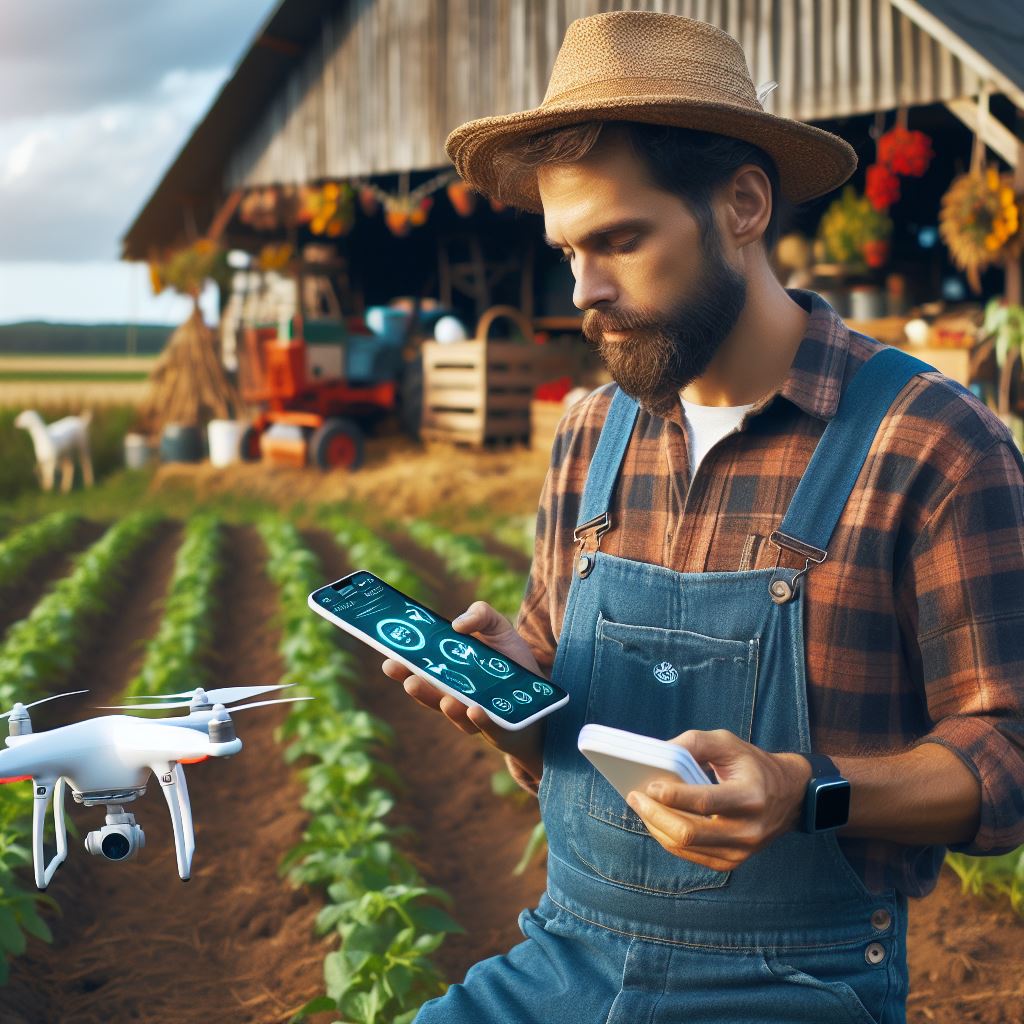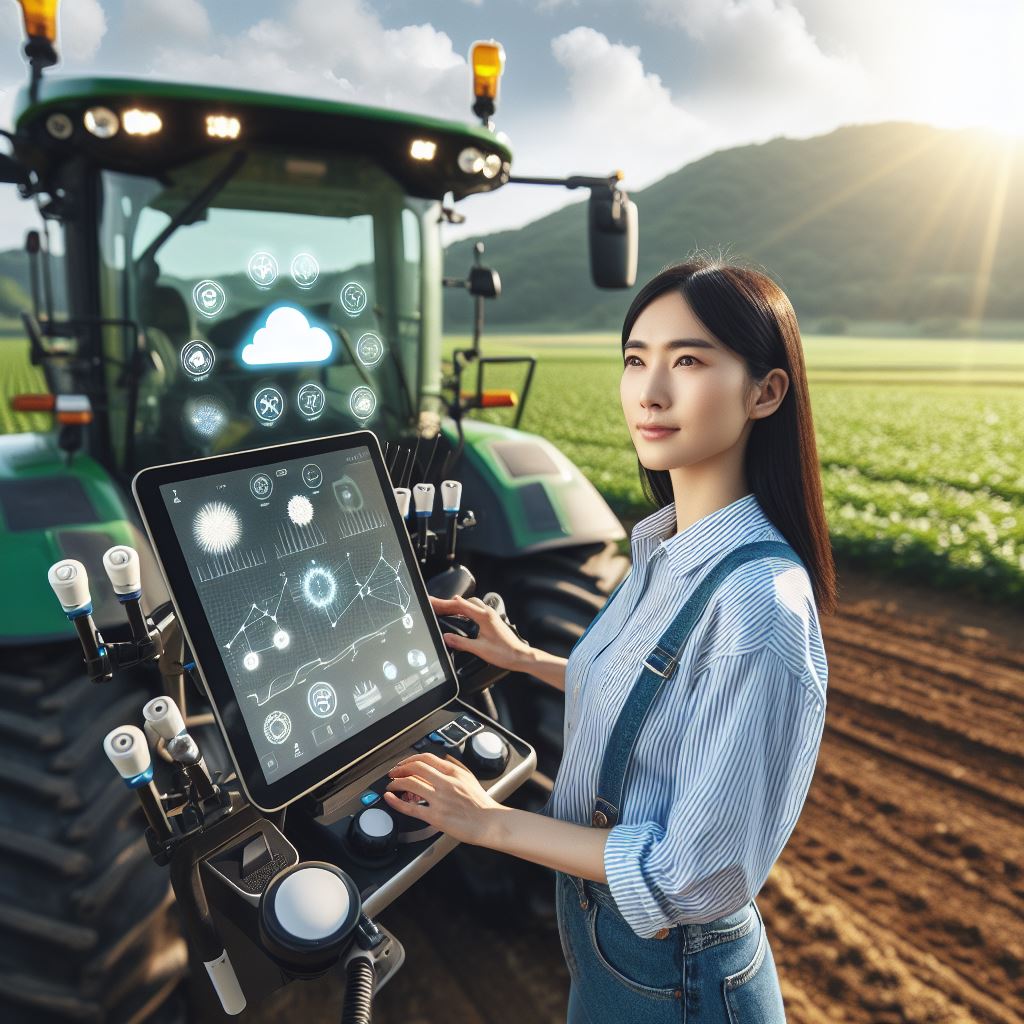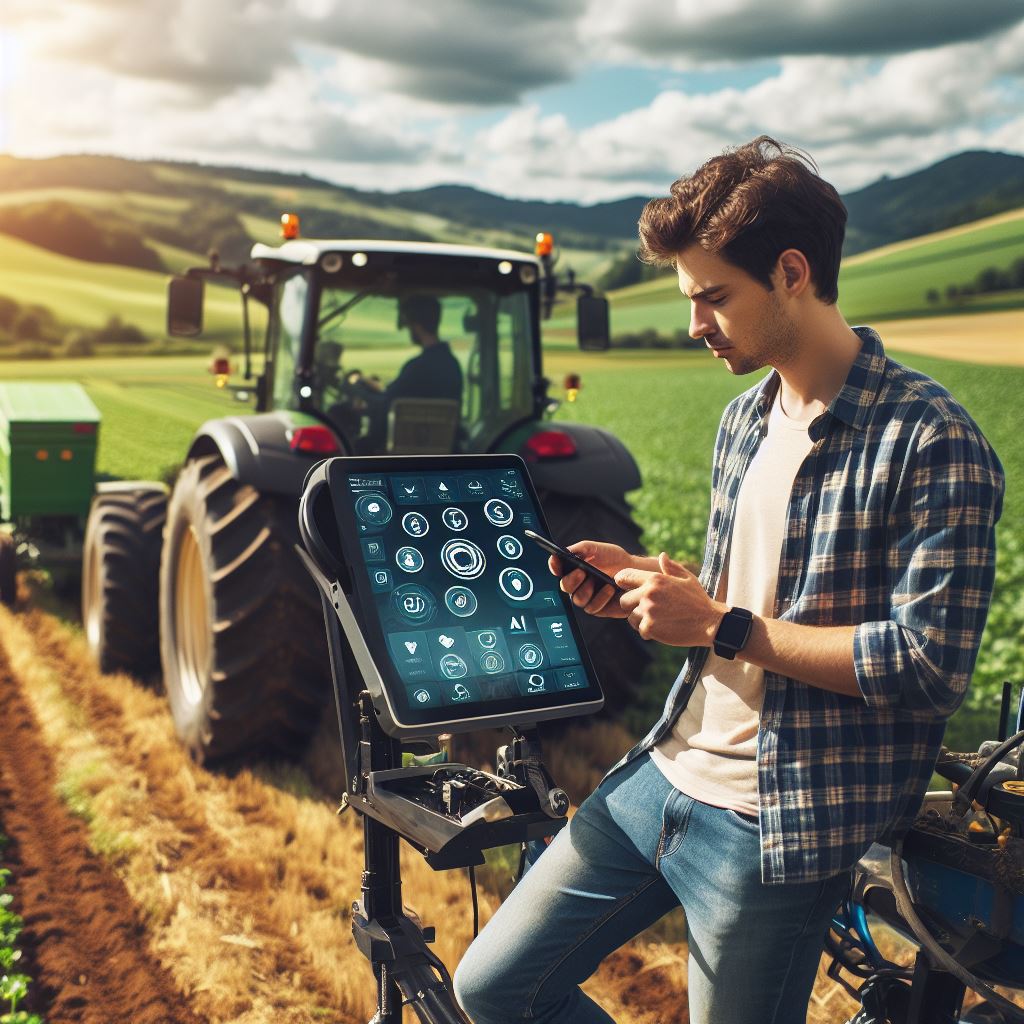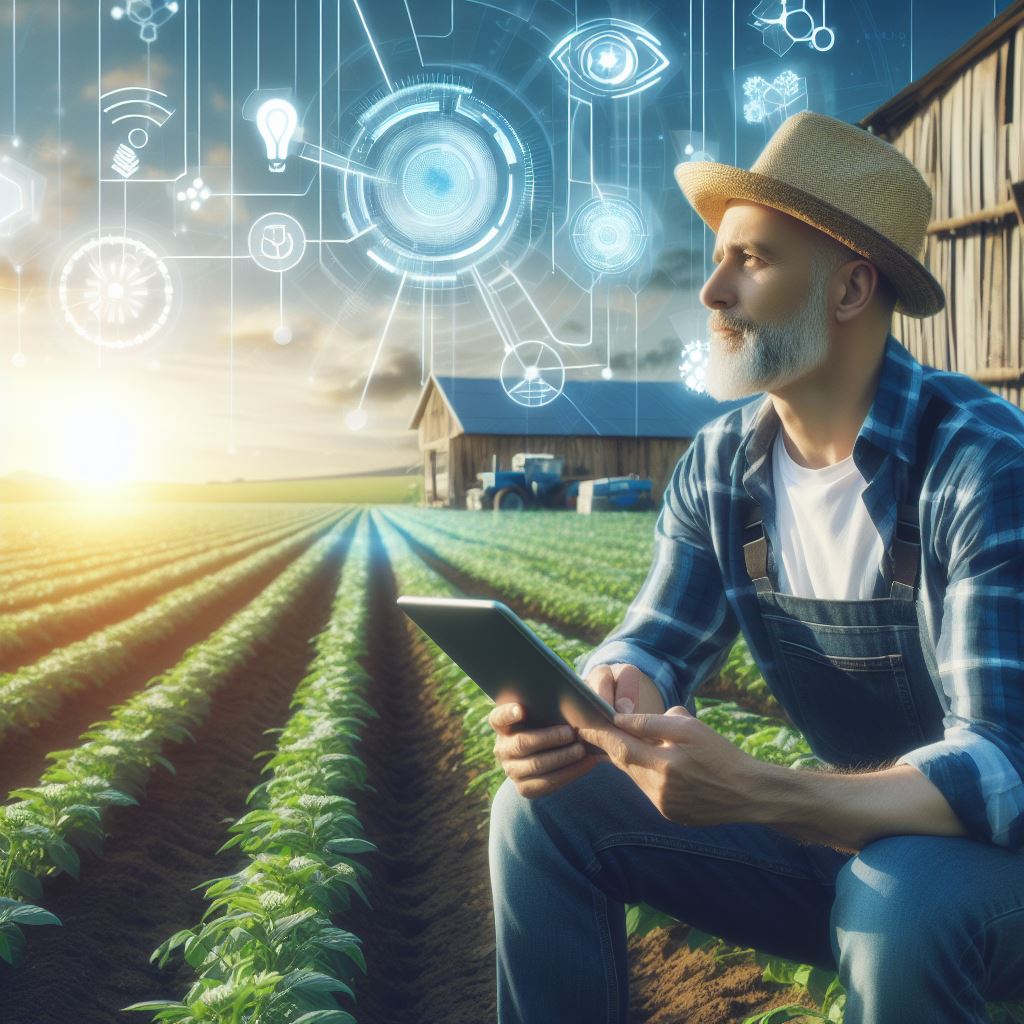Introduction
Drone imaging in farms offers a revolutionary approach to farm management by providing aerial perspectives.
The popularity of drone technology in agriculture is rapidly increasing due to its efficiency and effectiveness.
This blog post introduces the concept of drone imaging, discusses its popularity in agriculture, and previews upcoming topics.
Drone imaging enables farmers to monitor crops, assess soil health, and detect pests and diseases accurately.
The integration of drones in farming operations leads to improved decision-making and increased productivity.
We will explore the benefits of drone imaging, its applications in different farming practices, and potential challenges.
Furthermore, we’ll delve into the role of drone technology in sustainable agriculture and its prospects.
Through case studies and expert insights, we’ll examine real-world examples of successful drone implementation in farming.
The blog post will conclude with a reflection on the transformative impact of drone imaging on modern agriculture.
The Benefits of Drone Imaging in Farms
Drones have revolutionized the agriculture industry by introducing new perspectives through aerial imaging and data collection.
This technology is transforming farming practices worldwide, providing farmers with valuable insights and improving overall farm efficiency.
Increased Efficiency
- One of the major benefits of drone imaging in farms is increased efficiency.
- By utilizing drones, farmers can automate the data collection process, eliminating the need for manual inspections.
- Drones equipped with advanced cameras and sensors can cover large areas quickly, capturing high-resolution imagery.
- The time and resources saved by using drone technology are significant.
- Instead of spending hours manually inspecting crops, farmers can focus on analyzing the data collected by drones.
- This enables them to identify areas that require attention, such as crop health or irrigation needs, efficiently and effectively.
Precision Agriculture
Drones play a crucial role in precision agriculture.
By providing detailed imaging and data analysis, drones enable farmers to make informed decisions regarding various farming practices.
This includes irrigation, fertilization, and pest control.
The high-resolution imagery captured by drones allows farmers to closely monitor crop health and identify any potential issues.
Transform Your Agribusiness
Unlock your farm's potential with expert advice tailored to your needs. Get actionable steps that drive real results.
Get StartedBy analyzing this data, farmers can determine the precise amount of water, fertilizer, or pesticide required for each specific area of the farm.
This targeted approach maximizes resource utilization and minimizes environmental impact.
Cost Reduction
- Another significant benefit of drone imaging in farms is cost reduction.
- Early identification of crop issues through drone surveillance enables farmers to take prompt action before the problems escalate.
- By detecting crop diseases or nutrient deficiencies early on, farmers can prevent the spread and minimize crop losses.
- Furthermore, drones can help farmers optimize the use of fertilizers and pesticides.
- By identifying areas with specific needs, farmers can apply these inputs precisely, avoiding unnecessary wastage.
- This not only saves costs but also promotes sustainable farming practices by reducing chemical usage.
In short, drone imaging in farms offers numerous benefits to farmers.
Increased efficiency through quick and automated data collection helps farmers save time and resources.
Precision agriculture facilitated by detailed imaging and data analysis enables informed decision-making on irrigation, fertilization, and pest control.
Additionally, cost reduction is achieved by early detection of crop issues and optimal use of resources.
As drone technology continues to advance, its potential to revolutionize the agriculture industry becomes increasingly evident.
Read: Farming Apps: Top Picks for 2024
Applications of Drone Imaging in Farming
Drones have emerged as powerful tools in revolutionizing the agricultural industry.
Their ability to capture high-resolution images and collect valuable data has opened up new opportunities for farmers to enhance their crop production and overall farm management.
In this section, we will explore the various applications of drone imaging in farming, focusing on crop monitoring, soil analysis, and livestock tracking.
Crop Monitoring
One of the primary applications of drone imaging in farming is crop monitoring.
Drones equipped with high-resolution cameras can capture detailed images of crops from above, providing farmers with valuable insights into the health and growth rates of their plants.
By analyzing these images, farmers can identify potential problems such as pest infestations, nutrient deficiencies, or irrigation issues.
Furthermore, drones can also assist in assessing the effectiveness of different farming techniques or treatments.
By capturing images at regular intervals, farmers can track the progress of their crops and make informed decisions regarding fertilization, irrigation, or pest control.
This real-time monitoring allows for timely interventions, leading to improved crop yields and reduced losses.
Soil Analysis
Another important application of drone imaging in farming is soil analysis.
Drones equipped with special sensors can collect data on soil moisture levels, nutrient content, and other relevant parameters.
By flying over different sections of the farm, drones can create detailed soil maps and help farmers understand variations in soil composition.
This information is crucial for precision agriculture, where farmers can tailor their farming practices to specific soil conditions.
By identifying areas with low nutrient levels or high moisture content, farmers can apply fertilizers or adjust irrigation strategies accordingly.
This targeted approach optimizes resource utilization and minimizes environmental impacts.
Livestock Tracking
- In addition to crop monitoring and soil analysis, drones can also be used for livestock tracking.
- By equipping drones with advanced imaging technology, farmers can monitor the movement and behavior of their livestock from a bird’s-eye view.
- This helps in ensuring animal welfare, identifying injured or sick animals, and preventing theft or loss.
- With the ability to cover large areas quickly, drones can replace traditional manual labor in tracking livestock.
- This not only saves time and effort but also improves the accuracy of monitoring.
- Farmers can detect any unusual behavior or signs of distress promptly and take necessary action.
In summary, drone imaging has found tremendous applications in the farming industry.
Showcase Your Farming Business
Publish your professional farming services profile on our blog for a one-time fee of $200 and reach a dedicated audience of farmers and agribusiness owners.
Publish Your ProfileFrom crop monitoring to soil analysis and livestock tracking, drones provide farmers with valuable data and insights, enabling them to make informed decisions and improve their overall farm management.
As technology continues to advance, we can expect even more innovative uses of drones in agriculture, further transforming the way farming is done.
Read: Farm Data Analysis: Improving Yields
Challenges and Limitations
In this section, we will discuss the challenges and limitations associated with drone imaging in farms.
These include regulatory issues, technical constraints, and data management and analysis.
Regulatory Issues
- Compliance with airspace regulations and permissions: Drone operators must follow strict airspace rules for safety and to prevent collisions with other aircraft.
- Licenses and certifications required for drone operators: Pilots need to obtain appropriate licenses and certifications to legally operate drones for agricultural purposes.
Technical Constraints
- Battery life and flight duration limitations: Limited battery life constraints drones’ time in the field, necessitating frequent recharging or using multiple drones for larger areas.
- Weather conditions affecting drone performance: Strong winds, rain, or fog can affect drones’ flight stability and image quality, limiting their usability in farm imaging.
Data Management and Analysis
- Handling and processing large amounts of data collected by drones: Storing and processing large drone data is challenging, and timely analysis presents difficulties.
- Integration of drone data with existing farm management systems: Maximizing drone imaging value involves integrating data with farm management systems, a technically complex task.
In essence, while drone imaging in farms offers significant benefits, several challenges and limitations need to be addressed.
Regulatory compliance, technical constraints, and efficient data management are crucial aspects to consider for successful implementation.
Overcoming these challenges will pave the way for the widespread adoption of this technology, providing farmers with a new perspective and valuable insights for improved farm management.
Read: Nano-Tech in Farming: Small but Mighty
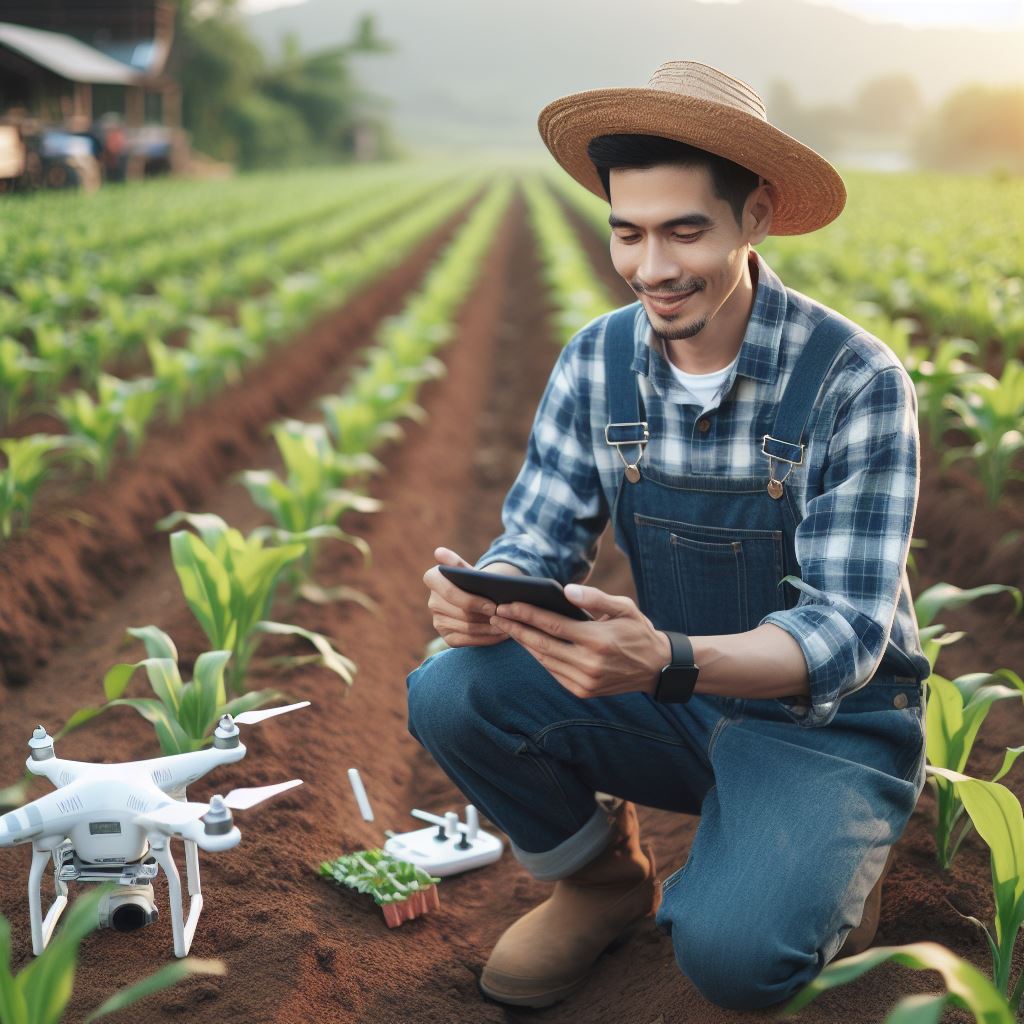
Case Studies: Successful Implementation of Drone Imaging in Farms
Example 1: White Oak Pastures
How White Oak Pastures utilized drone imaging for crop monitoring
White Oak Pastures, a renowned farm, implemented drone imaging technology to enhance their crop monitoring process.
By utilizing drones, they were able to monitor their crops more effectively and efficiently.
This innovative approach allowed them to gather real-time data on crop health, identify potential issues early on, and optimize their farming practices accordingly.
Positive impact on their productivity and cost savings
- The positive impact of drone imaging on White Oak Pastures’ productivity cannot be overstated.
- By using drones for crop monitoring, they were able to detect problematic areas in their fields quickly.
- This enabled them to take prompt action and prevent the spread of diseases or pests, resulting in higher crop yields.
- Furthermore, the cost savings achieved through the use of drones were remarkable.
- Previously, White Oak Pastures had to employ a manual monitoring system, which required significant labor hours and resources.
- With the implementation of drone imaging, they were able to reduce their workforce and allocate resources more efficiently.
- This led to substantial cost savings for the farm.
Example 2: Tejon Ranch
How Tejon Ranch used drones for livestock tracking
Tejon Ranch, a major livestock operation, revolutionized its animal tracking system by incorporating drones.
With the help of drones, Tejon Ranch was able to monitor their livestock more comprehensively and accurately.
The introduction of drones in livestock tracking allowed Tejon Ranch to oversee their animals’ movements and behaviors with unparalleled precision.
Drones equipped with advanced imaging technology provided real-time data on herd locations, enabling ranch managers to identify potential issues promptly.
This improved their ability to track and manage the health and well-being of their animals effectively.
Improvements in animal management and security
- In addition to enhancing animal management practices, drones also significantly improved security measures at Tejon Ranch.
- The aerial surveillance capabilities of drones helped deter potential theft and trespassing incidents.
- By constantly monitoring their vast ranching area from the sky, Tejon Ranch was able to promptly identify any suspicious activities and take appropriate action.
- This increased level of security not only protected their valuable livestock but also provided peace of mind to the ranch owners and employees.
Overall, the successful implementation of drone imaging technology in farms, as demonstrated by the case studies of White Oak Pastures and Tejon Ranch, showcases the immense potential of drones in agriculture.
By utilizing drones for crop monitoring and livestock tracking, farms can improve productivity, reduce costs, enhance animal management practices, and bolster security measures.
As the technology continues to advance, it is expected that more farms will embrace drone imaging and unlock its numerous benefits.
Future Trends and Innovations
Drones have already proven their worth in agriculture, offering farmers a new perspective and valuable data that simplify and enhance their decision-making processes.
As the technology continues to evolve, future trends and innovations in drone imaging hold great promise for the agricultural industry.
Advancements in Drone Technology
Emerging drone features like hyperspectral imaging and thermal sensors
Advancements in drone technology have led to the development of various features that are specifically tailored to meet the needs of farmers.
One such feature is hyperspectral imaging, which allows drones to capture data beyond the visible spectrum by analyzing light reflected off crops.
This provides farmers with detailed information about crop health, enabling them to identify stress factors and implement timely interventions.
Additionally, drones equipped with thermal sensors can detect variations in the temperature of crops, identifying areas that may require irrigation or pest control measures.
Potential benefits these advancements can bring to farming practices
- The potential benefits of these advancements are immense.
- By utilizing hyperspectral imaging, farmers can detect crop diseases or nutrient deficiencies at an early stage, leading to more efficient and targeted treatment.
- With thermal sensors, irrigation can be optimized based on specific crop needs, reducing water waste and improving overall water management on the farm.
- Moreover, analysis of crop yield data obtained through drone imaging allows farmers to make informed decisions regarding fertilization, planting density, and harvesting.
Integration with Artificial Intelligence
How AI algorithms can analyze drone data for more accurate predictions
Integration with artificial intelligence (AI) takes drone imaging a step further, with AI algorithms being able to analyze the vast amount of data captured by drones.
These algorithms can identify patterns, detect anomalies, and make predictions based on historical and real-time data.
By analyzing drone data, AI algorithms can identify crop stress factors, predict disease outbreaks, and provide precise recommendations for interventions.
This not only improves the accuracy and effectiveness of farming practices but also minimizes the use of chemicals and reduces environmental impact.
Predicted impact on improving crop yields and reducing environmental impact
- The predicted impact of AI-integrated drone imaging on improving crop yields is significant.
- By analyzing drone data, AI algorithms can optimize fertilization and irrigation schedules, resulting in higher crop productivity.
- This not only increases the profitability of farms but also ensures sustainable agriculture practices by minimizing resource wastage and reducing the environmental footprint.
- Furthermore, AI algorithms can assist in the early detection of pests and diseases, allowing farmers to implement targeted treatments, reducing crop loss, and increasing overall yield.
Ultimately, future trends and innovations in drone imaging for farms are continuously evolving to meet the specific needs of the agricultural industry.
Advancements in drone technology, such as hyperspectral imaging and thermal sensors, offer new capabilities for farmers to monitor crop health and optimize farming practices.
Integration with AI algorithms further enhances the power of drone imaging, providing more accurate predictions and recommendations for improving crop yields while minimizing environmental impact.
As these technologies continue to develop, the potential benefits for farmers are immense, ultimately revolutionizing the way crops are cultivated and enhancing overall agricultural sustainability.
Read: Climate Smart Agriculture: Tech Solutions
Conclusion
Drone imaging offers transformative benefits for modern farming practices. Drone technology enhances farm management by providing precise data for decision-making.
Integrating drone imaging with existing farm systems optimizes efficiency and productivity.
Despite challenges like limited battery life and weather constraints, the advantages outweigh the limitations.
The ability to monitor crops, assess soil health, and detect pests improves overall farm operations.
In summary, drone imaging presents a new perspective on farm management, enabling farmers to make informed decisions.
Showcase Your Farming Business
Publish your professional farming services profile on our blog for a one-time fee of $200 and reach a dedicated audience of farmers and agribusiness owners.
Publish Your ProfileBy adopting drone technology, farmers can gain a competitive edge and achieve sustainable agricultural practices.
We encourage readers to explore the possibilities of drone imaging and embrace its potential for their farms.
With the right approach and investment, drone technology can revolutionize the way we farm.

